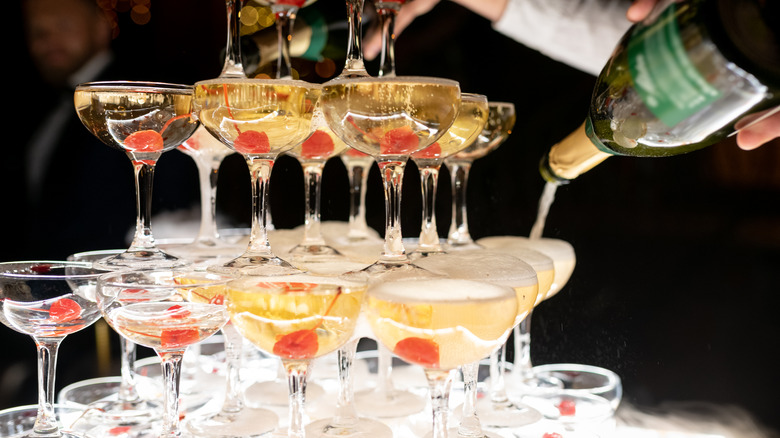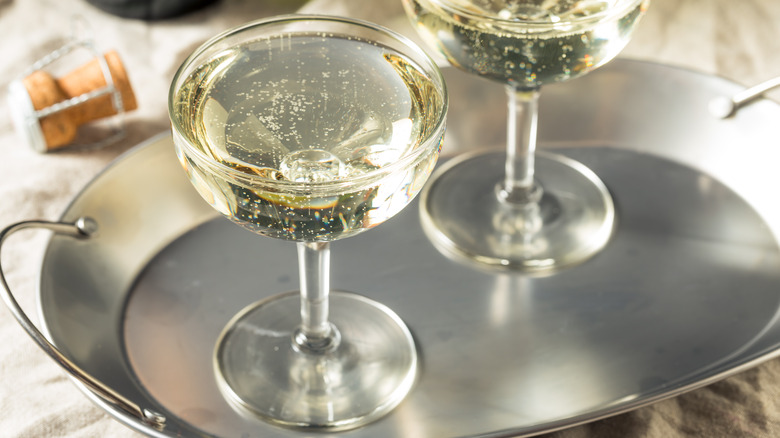The Reason Coupe Glasses Are Used For Champagne Towers
Champagne towers have long been a symbol of luxury and celebration, gracing the tables of glamorous events and upscale parties. These towering structures, often adorned with cascading streams of effervescent bubbly, evoke sophistication and extravagance and rely heavily on the firm stability of coupe glasses. Somewhat intertwined, champagne and coupe glasses have a storied past. The origins of the coupe glass date back to 17th-century Europe, where it gained popularity among the aristocracy. Characterized by its shallow, bowl-like shape and stem, the coupe was fashioned from delicate crystal or glass. However, it wasn't just aesthetics that drove the choice of the coupe; there were also practical considerations. The wider surface area of the coupe allowed the bubbles to dissipate more quickly, enhancing the aroma and flavor of the wine.
Fast forward to the 20th century, when the coupe glass continued to hold sway as a symbol of refinement and luxury. However, as champagne production evolved, so did the preferences for serving it. Champagne had become more effervescent, with higher carbonation levels than earlier iterations. This shift in champagne's characteristics led to concerns that the wide surface area of the coupe glass caused the bubbles to dissipate too quickly, compromising the wine's effervescence and sparkle. As a result, the flute — a taller, narrower glass — emerged as the preferred vessel (although maybe not the best), as it helped preserve the effervescence by minimizing surface area.
More bubbles, more fun
So, why do we still see coupe glasses used in champagne towers despite their perceived shortcomings in preserving effervescence? Champagne towers are as much about visual appeal as they are about serving, and the shallow, wide bowls of coupe glasses create a stunning display as champagne cascades from tier to tier. While flutes take center stage for individual enjoyment, coupes rule the roost when building these celebratory cascades.
Here's why: Imagine using tall, slender flutes for your tower. The slightest bump in this glassware could send the whole structure toppling like dominoes. The broader base and shallow bowl of coupe glasses create a sturdier foundation, distributing the weight more evenly and preventing a bubbly disaster. Coupe glasses offer a wider canvas for the cascading champagne. As the sparkling wine flows down, it creates a mesmerizing waterfall effect, drawing the eye and adding a touch of drama to the scene. The larger surface area of coupe glasses exposes more champagne to air, accelerating the release of those delightful bubbles. This translates to a livelier, more effervescent experience for guests as they reach the bottom tiers. So, the next time you witness a champagne tower sparkling brightly, remember the hidden hero beyond the bubbly: The coupe glass, which ensures stability, visual delight, and a touch of celebratory magic.

